Each of the 9 main enneagram types also has three subtypes which mean there are actually 27 enneagram subtypes! This gives much more understanding to a person’s type and provides more potential for growth!
What is an Enneagram Subtype?
An enneagram subtype (also known as an instinctual subtype or instinctual variant) is a combination of your main enneagram type (one of the nine numbers) and your survival instinct (there are three options).
Main enneagram type + survival instinct = subtype.
Of course, we no longer need to depend on our survival instinct quite as strongly as our ancestors did, but we still have a survival drive and then are seen in three forms or options.
No matter what type you are, you are wired towards one of these survival instincts. We’ll get into what that looks like for all the 27 possibilities below!
What are the Three Survival Instincts
The three survival instincts or what we call “subtypes” are Self-Preservation, Social, and Sexual (better called Intimate or One-to-One).
Self-Preservation (SP):
This instinctual subtype gives priority to physical needs such as health, finances, food, shelter, and family.
Social (SO):
This instinctual subtype gives priority to belonging and being accepted by the group or community.
Sexual/Intimate/One-to-One (SX):
This instinctual subtype gives priority to connecting intimately with individuals. Having “chemistry” with others but this does not necessarily need to be sexual (hence why “sexual” is not the best name for this subtype)
Instinctual Subtype Stacking 1
Can You Have More than One Subtype/Survival Instinct?
Yes, well somewhat. Everyone as one dominant instinctual subtype but that does not mean that they do not have access to the other two options.
This is what is called Instinctual Subtype Stacking (sometimes called sequencing)
We have access to all three survival instincts but they are on different levels or priorities.
These three levels/priorities are dominant, secondary, and tertiary.
Dominant = Over aware
Secondary = Neutral
Tertiary = Underdeveloped, a blindspot.
This is why you often see people list their subtype stacking instead of just one subtype.
Example: I’m a SO/SP 1. Social is my dominant subtype and self-preservation is my neutral secondary subtype, and I don’t need to list sexual/intimate (SX) because it’s obviously my last stacking and thus my blind spot.
There can be a bit of shifting between instinctual subtypes depending on your circumstances in life. For instance, your neutral subtype might kick in during a particularly hard time. However, generally, your stacking stays the same although the goal is to bring all three instincts into balance.
Does My Subtype Change My Enneagram Type?
No. Your subtype shifts how your main enneagram type acts but you are still 100% your type.
The way you act to survive causes you to look a bit different than others of your enneagram type with a different subtype but you will have the same core motivation as others with the same enneagram type.
In other words, if you are a social 9, you will appear a bit different than a self-preservation 9 or sexual 9…but you will still all share the same core motivation, you just go about getting that core desire a bit differently.
Enneagram Countertypes
The subtypes have a connection to the enneagram vices (or “deadly sins”). Most of the types use their vice in a typical way but one of our three instincts/subtypes uses it in the opposite way.
Example: A type 1’s vice is anger (better known as resentment for 1s). Self-Preservation and Social 1s tend to suppress their anger but the Sexual 1 is actually a bit ok with expressing their anger.
Subtypes who use their vice in a non-stereotypical way are the countertypes. They are still 100% their main type because they have the same core motivation but they often look more like a different type due to their actions and traits.
The 27 Enneagram Subtypes
subtype 1Type 1 Subtypes
Self-Preservation 1s
Focuses On: The need to be correct/right with their families, their health, their finances, and their homes.
SP 1s are the more stereotypical perfectionists of the 1s and are more likely to deal with worry and anxiety (over being correct/right) than other type 1s. However, they are also often the more warm and friendly of the 1 subtypes.
Relationship to Their Vice (anger): SP 1s tend to suppress their anger (and they tend to suppress it the most out of the 1 subtypes)
Potential Mistypes: SP 1s can often look like type 6s.
Social 1s
Focuses On: The need to be correct/right with their groups and communities.
SO 1s often take on being the teacher or role model with those around them; trying to show others the right way to live. These 1s are often concerned with fairness and justice.
Relationship to Their Vice (anger): SO 1s often suppress their anger but are also a bit ok with showing it.
Potential Mistypes: SO 1s can often look like type 3s or type 5s.
Sexual/Intimate 1s
Focuses On: The need to be correct/right with their intimate connections.
SX 1s are the Countertype of type 1 as they react in an opposite way with their vice (anger). They focus less on perfecting themselves and instead use their energy and zeal on perfecting others.
Relationship to Their Vice (anger): SX 1s are more likely to show anger than suppress it like the other 1 subtypes.
Potential Mistypes: SX 1s can often look like type 8s.
Type 2 Subtypes
Self-Preservation 2s
Focuses On: The need to be charming in order to have their physical needs met.
SP 2s are the Countertype of type 2 as they react in an opposite way with their vice (pride). They are timider in connecting with others; less prone to being helpers/givers. They tend to appear childish or childlike in order to be taken care of.
Relationship to Their Vice (pride): SP 2s tend to suppress their pride (and they tend to suppress it the most out of the 2 subtypes)
Potential Mistypes: SP 2s can often look like type 4s, type 6s, or type 7s.
Social 2s
Focuses On: The need to be charming with their groups and communities.
SO 2s focus on charming groups and communities and being influential within these groups. They tend to be generous and offer support, advice, and help in order to be seen as needed by the group.
Relationship to Their Vice (pride): SO 2s are more likely to show pride than the other subtypes of 2.
Potential Mistypes: SO 2s can often look like type 3s or type 8s.
Sexual/Intimate 2s
Focuses On: The need to be charming with their intimate connections.
SX 2s focus on charming and attracting strong intimate relationships. They are a bit more passionate and emotional than the other type 2s and often try to be physically appealing to others.
Relationship to Their Vice (pride): SX 2s may show pride.
Potential Mistypes: SX 2s can often look like type 4s.
Type 3 Subtypes
Self-Preservation 3s
Focuses On: The need to be valuable/admired in order to have their physical needs met.
SP 3s are the Countertype of type 3 as they react in an opposite way with their vice (vanity). They want to achieve but they don’t want to brag about it. These 3’s focus more on being good and attaining material security for themselves and their family.
Relationship to Their Vice (vanity): SP 3s tend to suppress their vanity
Potential Mistypes: SP 3s can often look like type 1s.
Social 3s
Focuses On: The need to be valuable/admired in their groups and communities.
SO 3s are more of the stereotypical 3 who want to climb the social ladder and be in the spotlight. They can be highly competitive in order to be or appear successful in whatever they are doing.
Relationship to Their Vice (vanity): SO 3s are more likely to show vanity than the other subtypes of 3.
Potential Mistypes: SO 3s can often look like type 8s.
Sexual/Intimate 3s
Focuses On: The need to be valuable/admired by their intimate connections.
SX 3s focus on being attractive and supportive with their intimate relationships. They tend to measure their value by how useful they are to those around them. These 3s are charismatic and love promoting others.
Relationship to Their Vice (vanity): SX 3s may show vanity.
Potential Mistypes: SX 3s can often look like type 2s.
Type 4 Subtypes
Self-Preservation 4s
Focuses On: The need to be themselves in order to have their physical needs met.
SP 4s are the Countertype of type 4 as they react in an opposite way with their vice (envy). They work to get what they feel others have/that they lack (not generally material envy but a more characteristic/wholeness envy). Nicknamed the “happy 4” they tend to keep the sad/hard emotions for behind closed doors.
Relationship to Their Vice (envy): SP 4s tend to suppress their envy.
Potential Mistypes: SP 4s can often look like type 1s, 3s, or 7s.
Social 4s
Focuses On: The need to be themselves with their groups and communities.
SO 4s are more of the stereotypical 4 who is open with all of their feelings and feels more shame than the other 4s. They connect to themselves and others through their authentic feelings.
Relationship to Their Vice (envy): SO 4s are more likely to show envy than the other subtypes of 4.
Potential Mistypes: SO 4s can often look like type 6s.
Sexual/Intimate 4s
Focuses On: The need to be themselves with their intimate connections.
SX 4s are nicknamed the “angry 4” as they are not afraid to ask for or demand for what they need. They are more shameless than shameful and can be competitive to avoid feeling “less than”.
Relationship to Their Vice (vanity): SX 4s may show envy.
Potential Mistypes: SX 4s can often look like type 3s or type 8s.
Type 5 Subtypes
Self-Preservation 5s
Focuses On: The need to be competent with their families, health, finances, and home.
SP 5s are the more stereotypical of the 5s and are more focused on maintaining strong boundaries so that they don’t become invaded. They try to limit their needs in order to avoid being dependent on others.
Relationship to Their Vice (avarice): SP 5s are ore likely to show avarice than other subtypes.
*Note: Avarice in the sense of feeling the need to carefully guard what they have; not a greed-based avarice.
Potential Mistypes: SP 5s are unlikely to mistype.
Social 5s
Focuses On: The need to be competent with their groups and communities.
SO 5s are the most extroverted of the 5s. They focus on gaining knowledge and potentially sharing that knowledge within their groups and communities. Their avarice is connected more to knowledge than to things.
Relationship to Their Vice (avarice): SO 5s may show avarice.
*Note Avarice in the sense of feeling the need to carefully guard what they have; not a greed-based avarice.
Potential Mistypes: SO 5s can often look like type 1s.
Sexual/Intimate 5s
Focuses On: The need to be competent with their intimate connections.
SX 5s are the Countertype of type 5 as they react in an opposite way with their vice (avarice). They focus on finding select individuals to trust and share life with. They are more aware of their feelings internally but may not show them.
Relationship to Their Vice (avarice): SX 5s are unlikely to show vanity.
*Note Avarice in the sense of feeling the need to carefully guard what they have; not a greed-based avarice.
Potential Mistypes: SX 5s can often look like type 4s.
Type 6 Subtypes
Self-Preservation 6s
Focuses On: The need to be secure/supported within their families, health, finances, and home.
SP 6s are the more stereotypical and most phobic of the 6s. They focus on being warm and building connections that will become their trusted alliances which will help them feel more secure and supported.
Relationship to Their Vice (fear): SP 6s are the most likely to show fear than the other subtypes of 6.
Potential Mistypes: SP 6s can often look like type 2s.
Social 6s
Focuses On: The need to be secure/supported with their groups and communities.
SO 6s focus on being responsible and logical to feel secure and supported. These 6s handle their fear by following authorities and rules. They love accuracy and knowing what is expected of them. Structure and guidelines bring security to these 6s.
Relationship to Their Vice (fear): SO 6s may show fear.
Potential Mistypes: SO 6s can often look like type 1s.
Sexual/Intimate 6s
Focuses On: The need to be secure/supported with their intimate connections.
SX 6s are the Countertype of type 6 as they react in an opposite way with their vice (fear), this is the subtype that is usually referred to as a “counterphobic 6” They may even be unaware of their fear as they tend to take on a “the best defense is a good offense” mentality.
Relationship to Their Vice (fear): SX 6s tend to suppress fear.
Potential Mistypes: SX 6s can often look like type 8s.
Type 7 Subtypes
Self-Preservation 7s
Focuses On: The need to be satisfied in their families, health, finances, and home.
SP 7s are the more stereotypical of the 7s. They focus on pragmatic planning and networking in order to support their own needs. They work towards satisfaction by being fun and building a network of supporters.
Relationship to Their Vice (gluttony): SP 7s are more likely to show gluttony than the other subtypes of 7.
Note: Gluttony does not need to be strictly related to food.
Potential Mistypes: SP 7s are unlikely to mistype.
Social 7s
Focuses On: The need to be satisfied with their groups and communities.
SO 7s are the Countertype of type 7 as they react in an opposite way with their vice (gluttony). These 7s have a more “give to get” mentality. They are willing to sacrifice their desires for the group and use enthusiasm to make themselves valued in the group.
Relationship to Their Vice (gluttony): SO 7s are not likely to show gluttony.
Note: Gluttony does not need to be strictly related to food.
Potential Mistypes: SO 7s can often look like type 2s.
Sexual/Intimate 7s
Focuses On: The need to be satisfied with their intimate connections.
SX 7s see the world through rose-colored glasses. They focus on exciting possibilities and idealistic dreams. They can lean more towards naive but they also can charm others into new visions and adventures.
Relationship to Their Vice (gluttony): SX 7s may show gluttony.
Note: Gluttony does not need to be strictly related to food.
Potential Mistypes: SX 7s can often look like type 4s.
Type 8 Subtypes
Self-Preservation 8s
Focuses On: The need to be protective of their families, health, finances, and home.
SP 8s focus on meeting their desire to be protective and autonomous by gaining power and influence. They get what they need quickly with no nonsense. These 8s are more direct and less emotional than other 8s.
Relationship to Their Vice (lust): SP 8s are likely to show lust.
Note: Lust does not need to be strictly sexual.
Potential Mistypes: SP 8s can sometimes look like type 5s.
Social 8s
Focuses On: The need to be protective of their groups and communities.
SO 8s are the Countertype of type 8 as they react in an opposite way with their vice (lust). These 8s focus on using their power and influence to serve and protect those in their group. They are very aware of injustice and less aggressive than other 8s.
Relationship to Their Vice (lust): SO 8s are not likely to show lust.
Note: Lust does not need to be strictly sexual.
Potential Mistypes: SO 8s can often look like type 2s.
Sexual/Intimate 8s
Focuses On: The need to be protective of their intimate connections.
SX 8s have a strong rebellious nature and like to command the attention of everyone. They focus on having possession of the environment around them. These 8s are the ore provocative and have a stronger desire for intensity than the other 8s.
Relationship to Their Vice (lust): SX 8s may show lust.
Note: Lust does not need to be strictly sexual.
Potential Mistypes: SX 8s can often look like type 4s.
Type 9 Subtypes
Self-Preservation 9s
Focuses On: The need to be at peace with their families, health, finances, and home.
SP 9s are more of the stereotypical 9 and they focus on living comfortably. They find peace in routines and familiar activities. They can be more aggressively concerned with meeting their physical needs than other 9s would.
Relationship to Their Vice (sloth): SP 9s are likely to show sloth.
Note: Sloth refers to slowness to do harder internal work such as engaging with their desires and needs.
Potential Mistypes: SP 9s can sometimes look like type 5s or type 8s.
Social 9s
Focuses On: The need to be at peace with their groups and communities.
SO 9s are the Countertype of type 9 as they react in an opposite way with their vice (sloth). These fun-loving 9s can become workaholics as they put the needs of the group above their own.
Relationship to Their Vice (sloth): SO 9s suppress sloth.
Note: Sloth refers to a slowness to do harder internal work such as engaging with their desires and needs.
Potential Mistypes: SO 9s can often look like type 3s or type 7s.
Sexual/Intimate 9s
Focuses On: The need to be at peace with their intimate connections.
SX 9s are very relationship-oriented and tend to merge with the opinions, attitudes, and passions of their intimate connections. These 9s are the more gentle and non-assertive of the 9s.
Relationship to Their Vice (sloth): SX 9s may show sloth.
Note: Sloth refers to slowness to do harder internal work such as engaging with their desires and needs.
Potential Mistypes: SX 9s can often look like type 2s or type 4s.
Want More Information on Subtypes?
If you want to learn more about the subtypes, I highly recommend picking up Beatrice Chestnut’s book: The Complete Enneagram. It focuses on and explains the 27 subtypes in great detail.
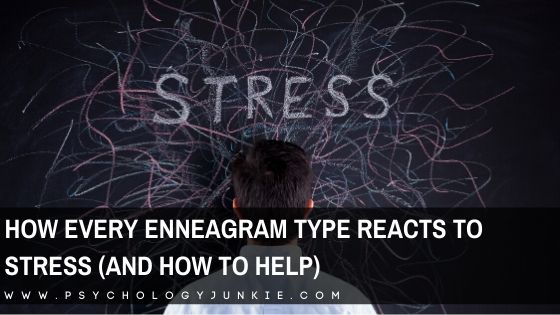



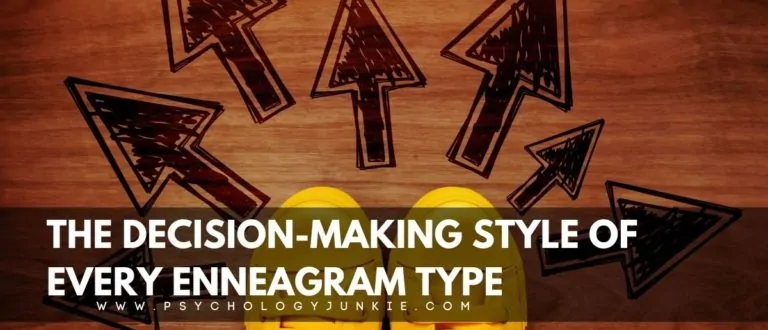
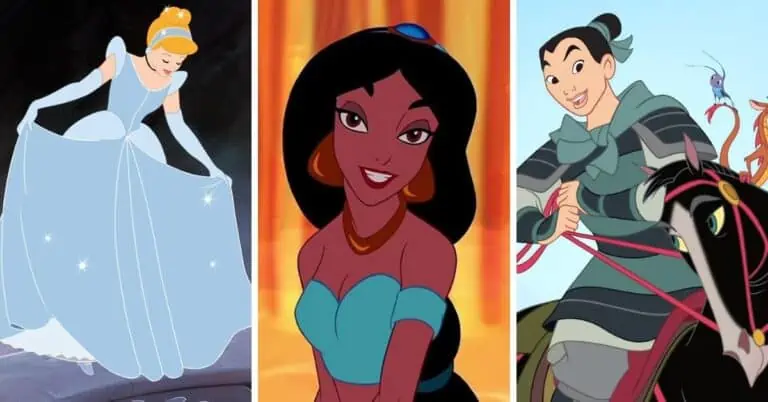
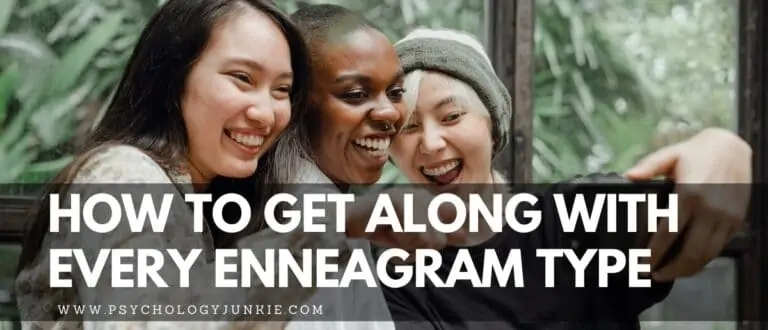
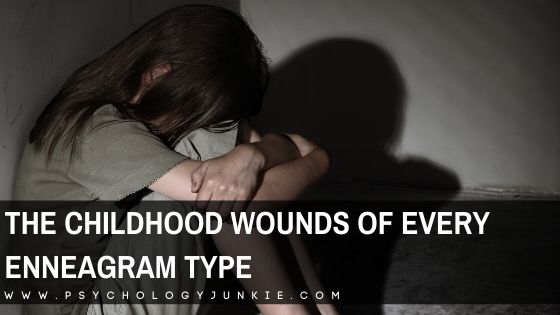

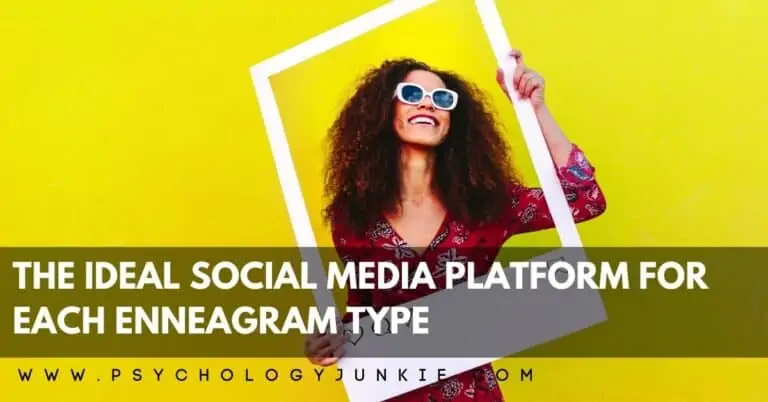

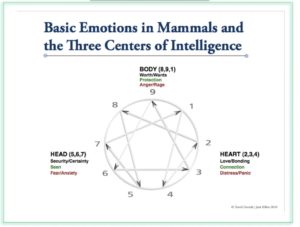

I’m an INFP, and recently tested as a 4w5 on the Enneagram Test. I’ve read descriptions about the Type Four personality and feel that it suits me more than any other as far as a fundamental enneatype is concerned. I’ve also read about how Fours integrate into Ones under growth, but Ones disintegrate into Fours under stress. After reading this article, I still feel that Type Four matches me the best, but I also related a lot to the stressors of Type One, which confuses me a little since Fours disintegrate into Twos under stress (I also identified with the stressors of Type Two, which I guess is to be expected given this relationship between Four and Two). Is it possible for a Four to experience the same stressors of the One since unhealthy Ones equate to unhealthy Fours?
Type 1, Susan. Thank you for sharing. Kind of hit the spot.
Gilbert
I can’t remember what type I am from testing a while back, 4 or 5 maybe, but regardless, I feel stressed out by 95% of the things on every type’s list.
I am type 5w6 and the above descriptions about them are spot on, especially in feeling incompetent or incapable and being distrustful of people, especially of friends or close ones.